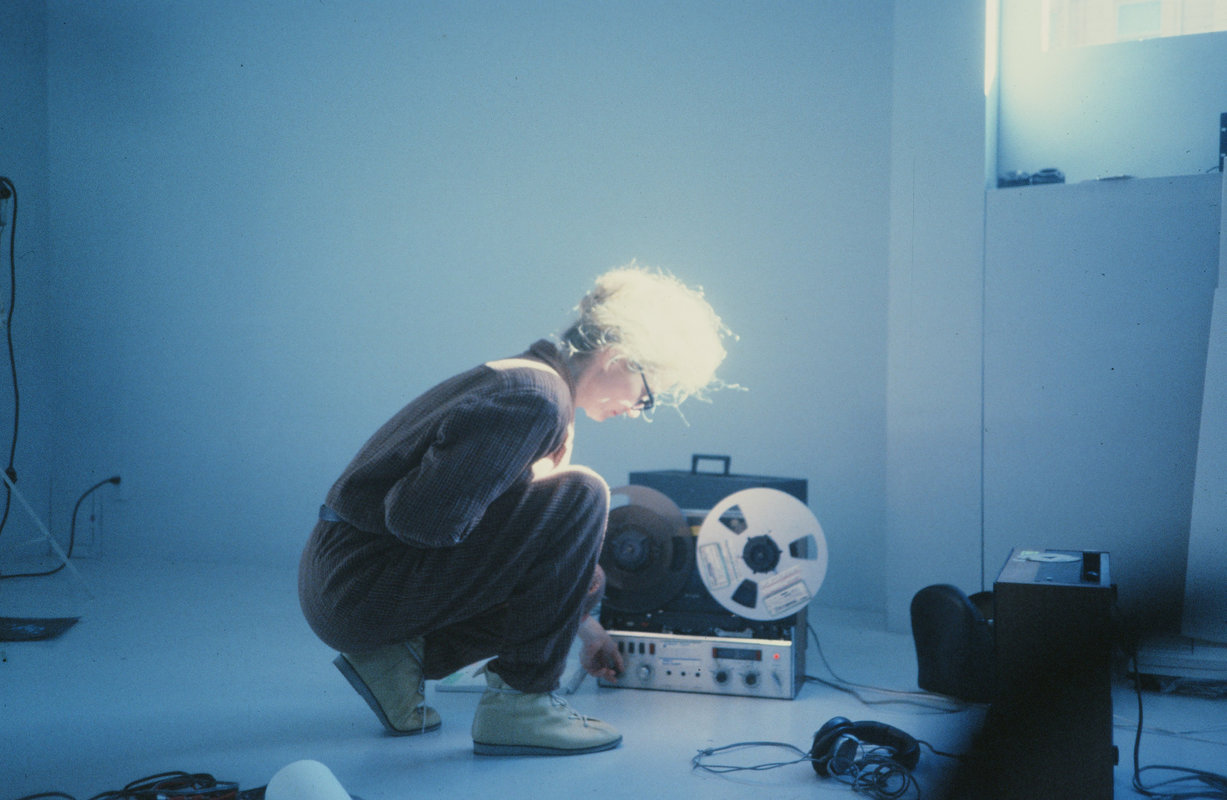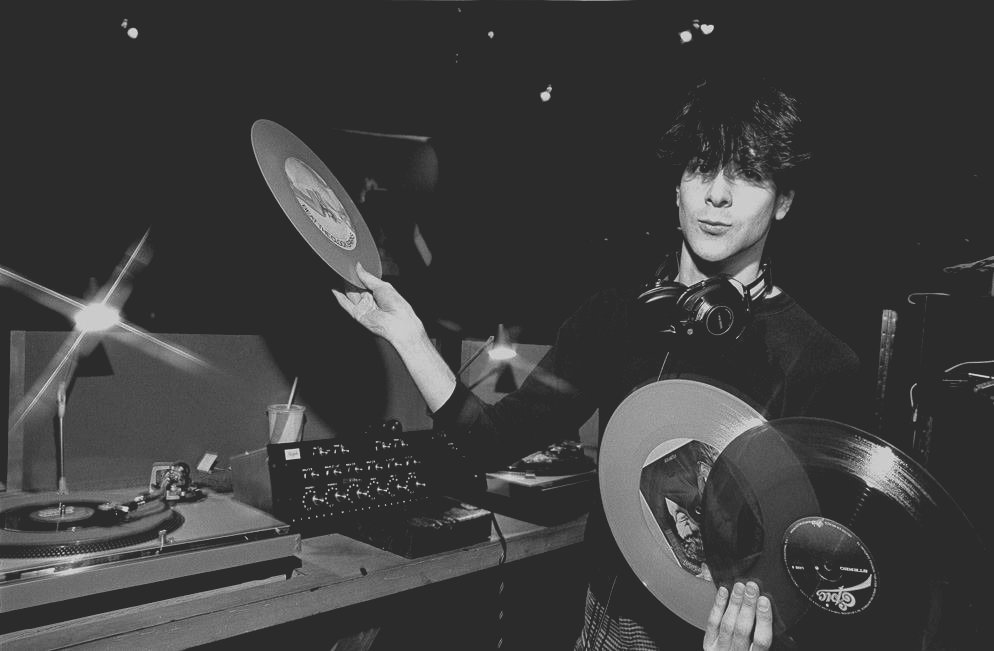
The second part of our interview with New York DJ / Producer / Remixer Justin Strauss focuses on his move from the Mudd Club to ground-breaking rock venue, The Ritz.
What year did you move to The Ritz?
I started playing at the Ritz in May of 1980, on the opening night.
What made you decide to move, and to sign to them exclusively?
I`d been DJing at the Mudd Club which was my first DJ job and it was fantastic. So many great nights there. But because they had a number of DJs including David Azarch, Johnny Dynell, Anita Sarko and others I was only working one night a week. I was really loving it but needed to make more money if this was going to how I made a living. Although I wasn't actively searching for other DJ gigs I was definitely keeping my eyes open.
Were you approached by Jerry Brandt?
Funny story. When I was around 10 or 11 years old my dad who was a painting contractor was offered the job of painting and construction at a new club called The Electric Circus opening on St. Marks Place in the East Village. He met with Jerry Brandt who came up with the concept and was one of the owners of the club. He told my dad at the time that he didn't have the money to pay him right away but was looking for investment and was promised a big sum of money from the Coffee industry after they opened the club and sold their first ticket. The scope of work that needed to be done was huge but my dad liked Jerry and believed in his idea and said yes he was in. I was a kid and this was in the late `60s. My dad would take me to the club while it was under construction and my mind was blown at what I was seeing. The main room was covered in circus tent like material and mirrors. Other areas were painted psychedelic colors and murals. They had a side room that was wall-to-wall, floor to ceiling black foam rubber with a slow strobe light blinking. I couldn't go there often enough during this construction phase and met Jerry Brandt with my dad as a kid. When the club finally opened it was a huge success. It was the first club I ever went to at the age of about 10 years old. The light show was like nothing I'd ever seen and it was the first time I heard a DJ in a club. Playing Rock and Soul music. I was already so into music. Once the club opened my dad would take me to see acts like Sly and the Family Stone, The Seeds, The Chambers Brothers. It was incredible. In a later incarnation of the club my band Milk n Cookies played their first NYC club appearance there when The Fast asked us to open for them. I was incredibly lucky to have experienced that. Years later I'm DJing the Mudd Club and in walks Jerry Brandt. I knew who he was immediately but he had no idea who I was or that we had ever met. He came to the club quite a few times and one night he approached me and told me about a new club he was opening on 11th Street, The Ritz and that he wanted myself and David Azarch to be the DJs, if we were interested. I told him I was definitely interested and would like to see the club. When I saw the club I was amazed at the size of it and what Jerry was planning on doing there. I didn't tell him that we had ever met or that he knew my dad. David wasn't ready to leave the Mudd Club, but I thought that this was a great opportunity for me to start something new. It wasn't till at least a year into working at The Ritz that I told Jerry the story about my dad. He was blown away.
How long did you stay at The Ritz? How many nights a week did you work there?
I worked there three nights a week from the very first night in 1980 till 1984. The other main DJ was Delphine Blue. She was great and went on to do radio DJ work after The Ritz. It was great to have a club I could work at that many nights a week and establish my sound.
Did your sets differ to those at The Mudd Club?
Two unique things about playing at The Ritz that made it very different to the Mudd Club were the live acts and the use of video in the club. Also as a DJ I was growing and being exposed to lots of music that I loved from different sources and so my sound was changing. And I also had been exposed to the concept of beat matching and mixing records by hearing Francois K and Larry Levan DJ. Which was new and exciting to me and changed the way I DJed at that point. At the Mudd Club I was just putting records together and making it work, which was great fun, but was eager to try and do more and take it to the next level.
Did the Mudd and Ritz compete for crowds? Did the crowds differ? You`ll have to excuse me cos I`ve only been to New York once, but were they close to each other geographically?
The Mudd Club was way downtown below Canal Street and was very small. The Ritz was on 11th Street between 3rd and 4th Avenues and was a much bigger venue. So although so people frequented both clubs, especially when a band say like Kraftwerk played, The Ritz had a much broader audience. The Mudd Club, when I worked there was still pretty exclusive and could be hard to get into.
If you look on-line for information on The Ritz there isn`t too much out there, other than it was located in Webster Hall. This is a big venue right? Wiki says a 2500 capacity. Is this correct? The Mudd Club always sounded a bit like a house party to me, did this change in numbers present a challenge? Did it change the way you played?
It was a big venue, not as big as the current Webster Hall, as they opened more rooms than the original Ritz had, but was still huge and was very exciting to be playing for that many people, after coming from a small venue like the Mudd Club. This was only the second club I played at that point. There was so much new music coming out from so many different places that my sound was changing and growing. Being exposed to the Paradise Garage had a huge effect on me, but The Ritz was primarily a "Dance Rock", "New Wave" type of venue. I was however sneaking in my new influences and creating my own sound. Some people would complain to club management that I was playing too much Disco. Which seems pretty insane now, that people could be so narrow minded. But I just kept on doing what I believed in. And as a lot of the New Wave or Post-Punk and Rock acts were incorporating more Disco and Dance elements in their records, it made things a bit easier to mix those records with Disco / Garage type records as well as early Hip Hop.
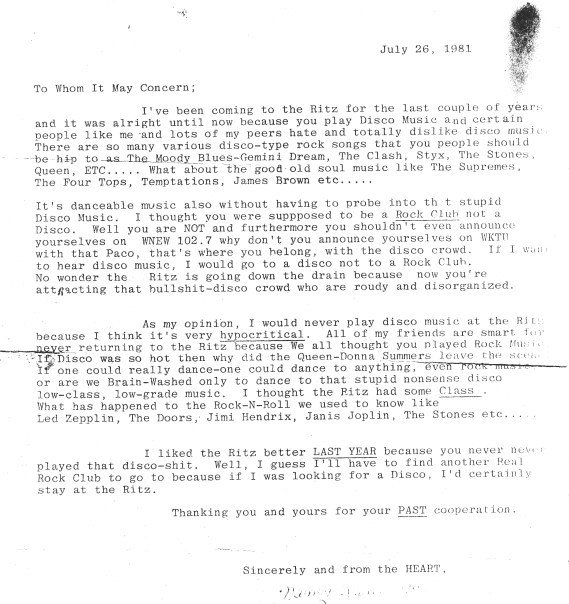
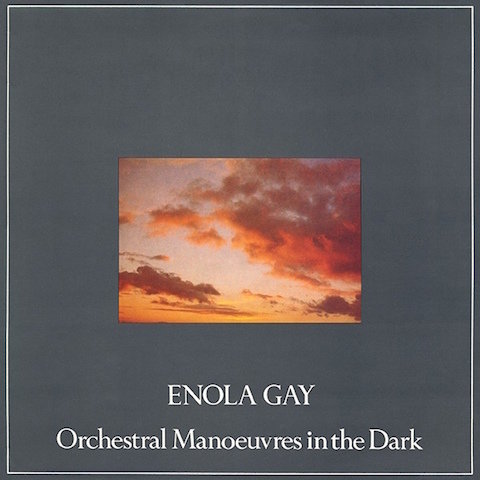
The venue seems to be remembered largely as one for live gigs, were you playing before and after bands?
Yes. I would play before the bands went on, and in between sets and after became the real dance party. I would tailor the night musically around the band or artist that was playing that night. I always felt the first record I played after the band finished was the most important, as the right one would keep a crowd that mostly came for the band and then I could build the rest of the night around that.
The list of artists who have played The Ritz seems endless and very eclectic. Klaus Nomi, U2, Funkadelic, Duran Duran, Depeche Mode, Ozzy Osbourne, Run DMC, Sting, with many of the English groups making their US debuts there. Were you involved in the booking of acts?
No I wasn't directly involved in the booking. I would make suggestions of new things I heard and records I was playing though. Jerry Brandt did a lot of the booking at first and then Michael Alago did it, and after he left Marty Diamond took over. The amount of amazing acts from all genres of music that played at the Ritz is astounding. Basically everyone you'd want to see at their best. From Prince, Kraftwerk, U2, Tina Turner, Human League, Spandau Ballet, Bow Wow Wow, Sugar Hill Gang, Gang of Four, incredible Reggae shows from Black Uhuru and Third World. Kid Creole and the Coconuts were basically the house band performing there regularly as well. Kraftwerk played in the Summer of 1981, when “Computer World” came out. Everyone in New York was buzzing about that show. Krarftwerk hadn`t played in the city since the 70s, and by `81 their influence was huge. I invited as many of my DJ friends as I could over the course of the two nights: Afrika Bambaataa, Francois K., Ivan Ivan, Larry Levan all hung out. It was the first tour that they used the “dummies”, and the whole theme and set design had some sort of U-Boat feel to it. When they performed their song “Pocket Calculator” Florian came out to the audience and let the crowd press the buttons on the small keyboard he held in his hand. The show and the music were ground breaking. It was one of those nights, among many that changed a lot of lives. The list of shows is endless and I`m so thankful to have had the best seat in the house.
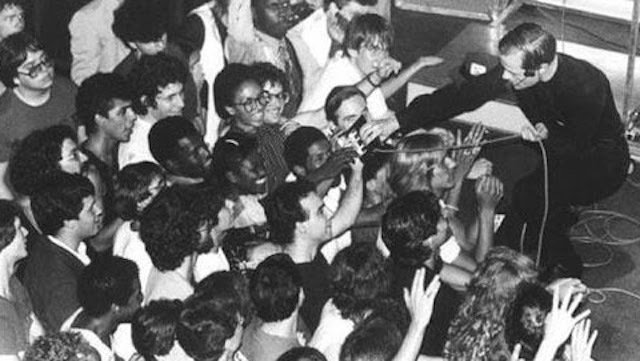
The other thing that Wiki pins on The Ritz is being the first club to extensively use video. Can you tell us more about the set up? Were you VJing as well as DJing?
It was the first club to use video. They had this incredible, early video projector. It was very big, and cost $120.000.00, which at that time was like spending a million today. And a huge screen in front of the stage. Throughout the night they would show film images, graphics, cartoons, etc. while I was djing, interspersed with new music videos. They had a separate person, a VJ, the first I guess. The main guy I worked with there as a VJ was this brilliant kid named Chris Dunham. He would really mix the images well while I played and then would do short music video sets. And I would mix records into the music videos. It was all ground breaking stuff at the time.
Was this before MTV? Did MTV get involved?
The Ritz opened in May of 1980, MTV didn't launch till August 1981 a year later. MTV definitely used The Ritz a bunch and even had the premiere party there, but other than that not really involved. Some of their VJs would come and introduce some of the bands that performed at the Ritz. But The Ritz was first. It was pretty incredible and I don't think the Ritz gets the credit it deserves for being the innovative club it was for featuring so many new bands and whole video explosion, and letting me have free reign to DJ whatever I wanted. Jerry Brandt was a genius in that respect.
Can you tell us more about the “infamous” PIL gig? Were you a fan of PIL?
I was a huge fan of PIL. I had actually seen the Sex Pistols last show in San Francisco as I was living in LA at the time and we drove to see the show at Winterland, which was incredible. Needless to say the anticipation for the PIL show was major. The place was packed, sold out. PIL instructed the stage crew to leave the huge video screen down while they played. The crowd wasn't too happy at all about this and starting booing. John Lydon was winding the crowd up saying stuff like "Did You Get Your Money's Worth?" and "Do You Feel Cheated?" and basically belittling the audience that paid money to see them. The crowd got more and more angry and starting throwing bottles at the stage and at the DJ booth in the back. A near riot was taking place and it was scary. I was under the DJ booth trying to stay out of the way of flying bottles. It was wild, but pretty amazing at the same time.
I`ve noticed that the time-line we`ve discussed overlaps with your first production and remix work. Would it be possible to tell us something about how you got those opportunities and your first experiences in the studio?
In late 1982 and early 1983 I had already been spinning at The Ritz for a few years and had been asked to DJ at two new clubs opening, the Limelight and AREA. I was being so inspired by the remixes I was playing by Shep Pettibone, Francois K., and Larry Levan that I was really wanting to try my hand at doing some. In 1983 having a studio at home was not an option. As it turns out, although I had moved from being the lead singer in Milk n' Cookies, and had started my life as a DJ, my first two remix projects actually came from two of my former band mates. Ian North, the guitarist and songwriter for Milk n' Cookies had done a few solo projects and opened his own studio, INS, down on Murray Street. He had a new project and asked if I'd be interested in doing a club mix for one of the tracks called "Don't Look Into My Eyes". Of course I said yes, and went in with the engineer at Ian's studio and basically stripped the track down, extending the parts that I thought would make the track more club friendly. Ian pressed up the 12" on his own label as a test pressing for DJ's. And with that I started my remix career.
Around the same time in 1983, the bass player from Milk n' Cookies, Sal Maida, who had previously played with Roxy Music and did a stint with Sparks after he left Milk n' Cookies had started a new band with his girlfriend Lisa Burns called Velveteen. They were signed to Atlantic Records and were recording their debut E.P. for the label. Sal and Lisa asked if I'd be interested in co-producing one of the tracks and as well doing a remix for another. This was all very new to me and somewhat daunting, but sometimes the best way to learn how to do something is just to do it. Ian North had a Linn Drum at his studio and did some drum programming on the song "Nightline" which I co-produced, and for the remix of the track "Wild Rain" I asked my friend and fellow downtown DJ Ivan Ivan who was just starting to do studio stuff as well, if he'd like to work on the mixes with me. We did a mix on the song as a dubbier club version called "Get Wild".
Also at that time Bobby Shaw who was doing Dance / Club Promotion at MCA Records was interested in signing this European High Energy track by Sean Hayden called "Party Boy" and asked if I'd be interested in doing a more New York club mix. I went into the studio and reworked the track. The deal never happened and the mix was never released, but I`d caught the remixing bug. I had become good friends with another downtown DJ Murray Elias and we decided to form a remix / production duo called Popstand Productions. Being a DJ at the some of the biggest and best clubs in New York I had access and the ears of some of the A&R and Promotion people at record labels and asked them to give me a shot at doing some remixes. Robin Kravitz who was doing A&R and promotion at Elektra Records asked if we'd like to try a remix of Greg Kihn's "Reunited", his follow single to his hit "Jeopardy". We went in the studio with the engineer Jay Mark, at the famed Sigma Sound Studios and did our first released remix. Other labels started reaching out, most importantly Wendy Goldstein, A&R at RCA Records, who was a big early supporter and had us work on remixes by Wax and the Blow Monkeys, and others. I also bought my first drum machine, an SP-12 from Sam Sever, who was doing projects with Mantronix and later worked with 3rd Bass and Big Audio Dynamite. This totally changed the sound of our mixes and productions and I knew this is what I was I wanted to do. Not long after, through my girlfriend at the time, I was introduced to Eric Kupper who had a band looking for a producer. Although Eric had never played keyboards on a record I liked his style and enlisted him to be the keyboard player on our and my remixes from that point on. As well as meeting and working with great editors, Chep Nunez and Tuta Aquino, and working with amazing engineers, Hugo Dwyer, Daniel Abraham and Frank Heller. I learned so much from all of them and they inspired and helped me create my sound and vision.
Your edit of Wax`s “Ball & Chain” was huge on the London "Balearic" scene around 88 / 89.
It's one if my favourites for sure. Thank you!!

